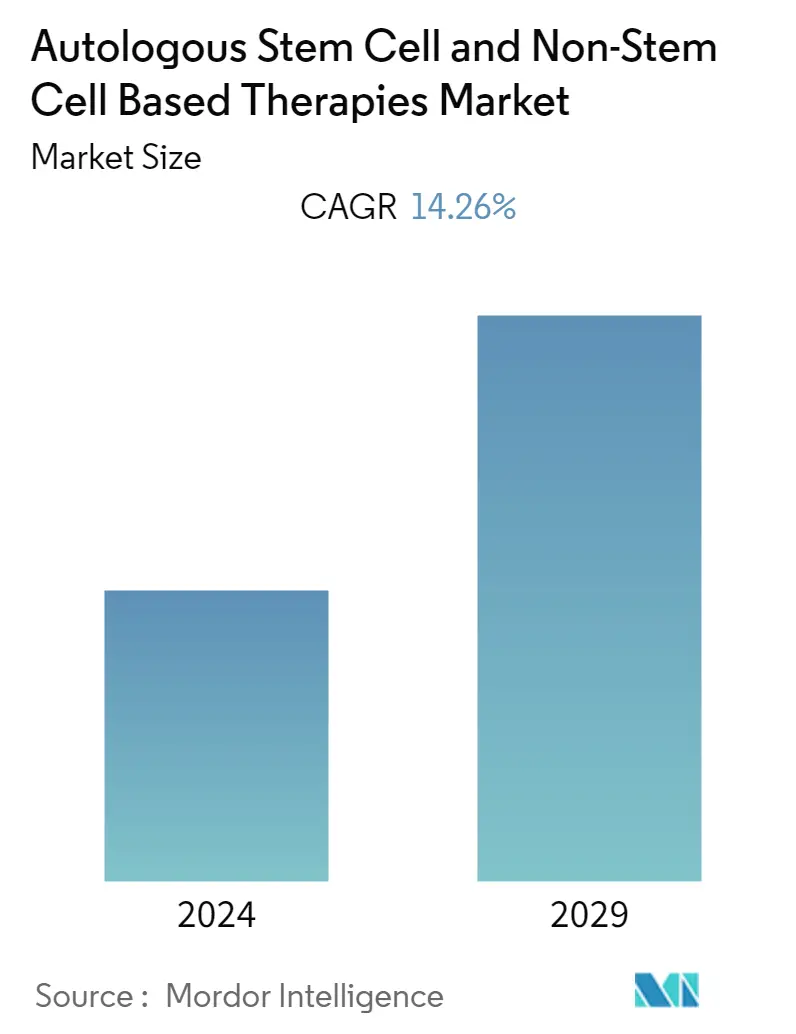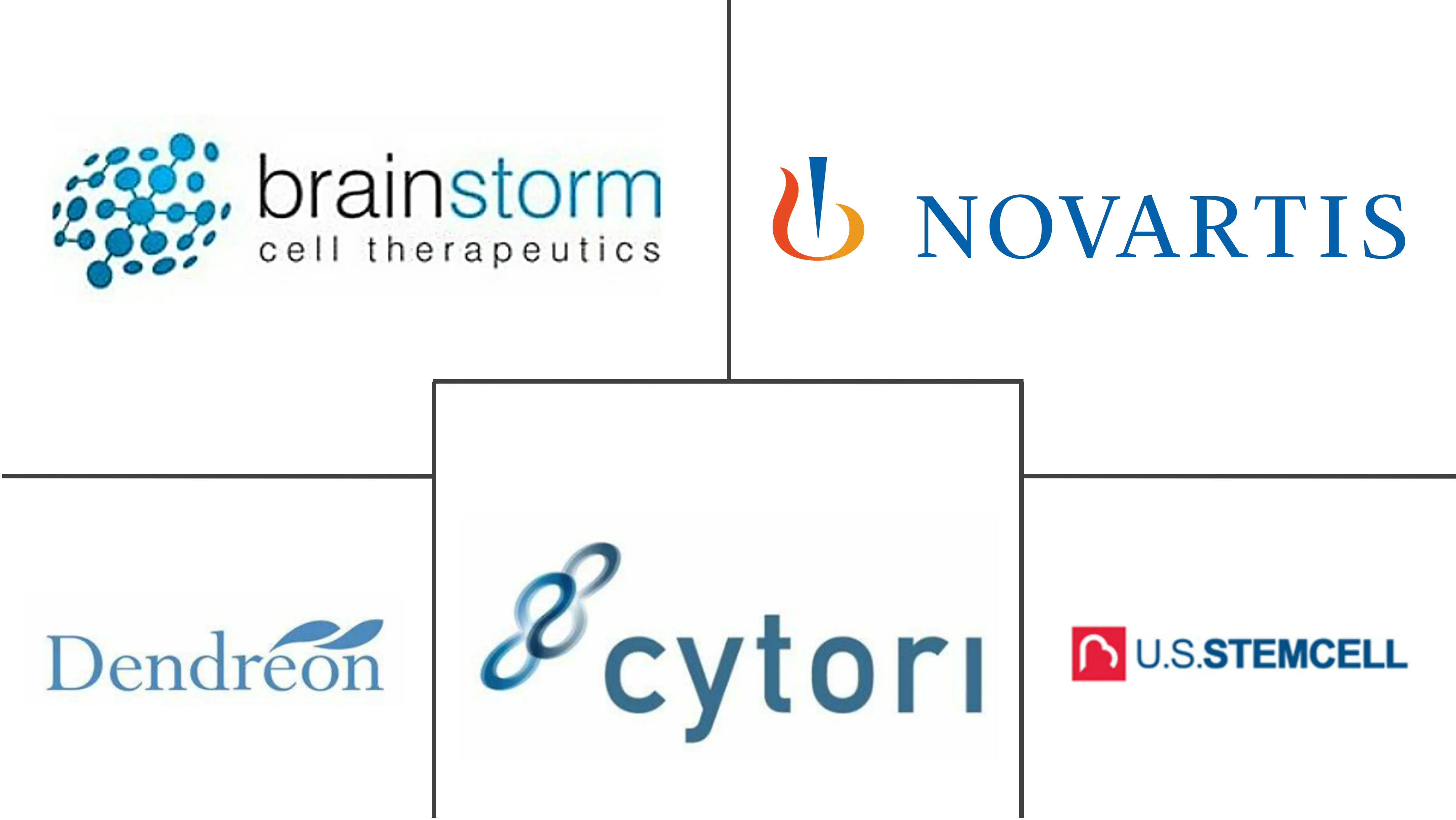Market Size of Autologous Stem Cell and Non-Stem Cell Based Therapies Industry

| Study Period | 2019 - 2029 |
| Base Year For Estimation | 2023 |
| CAGR | 14.26 % |
| Fastest Growing Market | Asia Pacific |
| Largest Market | North America |
| Market Concentration | Medium |
Major Players
*Disclaimer: Major Players sorted in no particular order |
Need a report that reflects how COVID-19 has impacted this market and its growth?
Autologous Stem Cell & Non Stem Cell Based Therapies Market Analysis
The autologous stem cell and non-stem cell-based therapies market is anticipated to register a CAGR of 14.26% over the forecast period.
The COVID-19 pandemic affected the healthcare industry, especially the surgery and therapy sectors. Several treatments and surgeries that were deemed non-urgent were either canceled or postponed, which significantly affected the market's growth during the initial phase of the pandemic. However, with the growing complications associated with COVID-19 patients, the demand for stem cell-based therapies increased to a great extent. For instance, as per a study by a group of researchers from Poland published in the journal Medicina in July 2021, hematologic stem cell transplantation recipients were at a higher risk of COVID-19-associated complications due to underlying disease, the immunosuppressive effect of conditioning, and delayed immune reconstitution. The uncontrolled production of neutrophil extracellular traps and cytokines in patients affected by COVID-19 correlated with disease severity and lung injury extension. Such studies highlighted the need for appropriate treatment considering autologous stem cell and non-stem cell-based therapies, thereby driving the market's growth during the post-pandemic period.
Factors driving the market's growth are the rising prevalence of targeted diseases, the introduction of novel autologous stem cell-based therapies in regenerative medicine, and the increase in the geriatric population.
There is a significant increase in the geriatric population around the world. For instance, the number of people over the age of 85 in the United Kingdom is projected to reach 3.1 million by mid-2045, as stated by the United Kingdom Office for National Statistics in January 2022. According to the data published by the Indian Ministry of Statistics and Programme Implementation in July 2021, the population over the age of 60 in India is expected to increase from 138 million in 2021 to around 194 million by 2031. As people age, there is an increase in the occurrence of degenerative diseases, which could be treated with the help of stem cell therapy. The growing older population is expected to increase the demand for innovative disease treatment procedures, thereby accelerating the growth of the global autologous stem cell and non-stem cell-based therapies market.
Stem cell technology is a speedily developing technology that plays a major role in regenerative medicine. It also serves the disciplines of tissue engineering, developmental cell biology, cellular therapeutics, gene therapy, chemical biology, and nanotechnology. Stem cells can replace the cells and tissues to treat various conditions, including spinal cord injury, arthritis, and Parkinson's disease. According to the CDC, in October 2021, around 63 million people in the United States were estimated to have been affected by arthritis, with the numbers estimated to rise to 78 million by 2040. There has been an increase in research on using stem cells as experimental treatments for arthritis to help regrow cartilage. The applications of stem cell technologies in such treatments increased the overall adoption rate of these technologies across the world. The advantage of an autologous stem cell transplant is that one gets one's cells back, and there is no risk of rejection from the immune system of the individual. Such research studies are expected to contribute to the growth of the market studied over the forecast period.
The product approvals concerning autologous stem cell-based therapies are expected to boost the growth of the market. For instance, in March 2021, the US FDA approved Novadip's Investigational New Drug (IND) application for its autologous cell therapy product NVD003 for treating congenital pseudarthrosis of the tibia.
The aforementioned factors are expected to boost the growth of the market studied during the forecast period. However, the high cost of autologous cellular therapies and the lack of skilled professionals are anticipated to hinder the market's growth.
